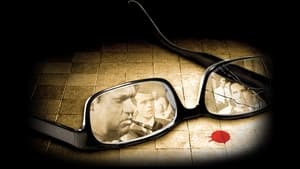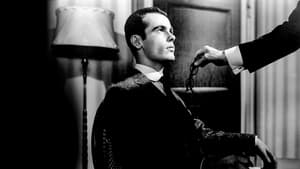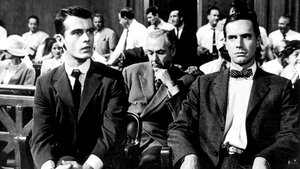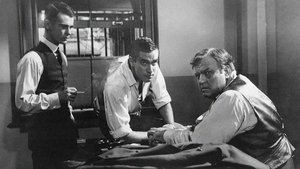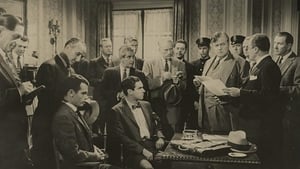Contact: info@alwanfilm.com
Video Sources 0 Views

Compulsion 1959 Colorized
Synopsis
Compulsion 1959 Colorized Review: A Haunting Thriller in Vibrant Color

Introduction
In the realm of classic cinema, Compulsion (1959) stands as a gripping psychological thriller that continues to enthrall audiences with its intricate storyline and compelling performances. Now, with the release of an early colored version, viewers have the opportunity to experience this cinematic masterpiece in a whole new light. In this review, we will delve into the world of Compulsion (1959), exploring its significance as an early colored film and its enduring legacy in the annals of cinema history.
Check The Full Colorized Movies List
Check Our Colorized Movies Trailer Channel
Understanding Compulsion 1959 Colorized: Director, Cast, and Genre
Directed by Richard Fleischer, Compulsion (1959) is based on the infamous Leopold and Loeb case, a true story of two young men who commit a senseless murder to prove their intellectual superiority. The film boasts a stellar cast, including Dean Stockwell as Judd Steiner, Bradford Dillman as Artie Strauss, and Orson Welles as the brilliant defense attorney Jonathan Wilk.
Fleischer’s vision for the film was to delve into the minds of these characters, exploring the dark depths of their psyche and the moral ambiguity of their actions. Compulsion (1959) falls under the genre of crime drama, but its psychological elements elevate it to a level of profound introspection.
Exploring the World of Compulsion 1959 Colorized: Plot and Characters
Set in 1924 Chicago, Compulsion (1959) follows the chilling tale of Judd Steiner and Artie Strauss, two affluent young men who believe they are above the law. Inspired by the philosophy of Nietzsche, they commit a brutal murder simply for the thrill of it. As the investigation unfolds, their arrogance and privilege are put to the test, leading to a riveting courtroom drama.
The characters in Compulsion (1959) are intricately woven, with Judd representing the cold intellect and Artie embodying the impulsive nature of their crime. Orson Welles delivers a captivating performance as the defense attorney, adding layers of complexity to the narrative.
The Art of Film Colorization
The early 1950s saw the emergence of colorization techniques in cinema, offering filmmakers a new way to enhance visual storytelling. Colorization involves digitally adding color to black and white films, breathing new life into classic movies and introducing them to modern audiences. While controversial, colorization has allowed viewers to experience timeless films in a fresh and vibrant manner.
Early Colored Films: A Brief History
The concept of colorizing black and white films dates back to the early 20th century, with hand-painted frames being a common practice in silent cinema. However, it was not until the advent of digital technology in the late 20th century that colorization became more widespread. This paved the way for the release of early colored versions of classic films, including Compulsion (1959).
Compulsion 1959 and Its Early Colored Version
The decision to release Compulsion (1959) in a colorized format was met with both anticipation and skepticism. Purists argued that tampering with the original black and white aesthetic would detract from the film’s artistic integrity. However, proponents saw it as an opportunity to introduce a new generation of viewers to this timeless masterpiece.
The Debate Over Film Colorization
The debate over film colorization has raged on for decades, with proponents citing the potential to breathe new life into old movies and attract younger audiences. However, opponents argue that colorization compromises the artistic vision of filmmakers and diminishes the historical significance of black and white cinema.
Examining Compulsion 1959 as an Early Colored Film
Viewing Compulsion (1959) in its early colored version offers a unique perspective on the film’s visual aesthetics. While purists may balk at the idea of tampering with the original black and white format, colorization can enhance certain aspects of the viewing experience. For example, vibrant hues can highlight the contrasting moods and emotions depicted in the film, adding depth to its narrative.
Influence and Legacy: Compulsion 1959 Colorized’s Impact on Cinema
Compulsion (1959) has left an indelible mark on the cinematic landscape, inspiring countless filmmakers and serving as a benchmark for psychological thrillers. Its exploration of morality, intellect, and privilege continues to resonate with audiences to this day. Moreover, the film’s early colored version serves as a testament to its enduring legacy and ability to adapt to changing technological advancements.
Director’s Cinematic Legacy: Beyond Compulsion 1959 Colorized
Richard Fleischer’s contribution to cinema extends far beyond Compulsion (1959). Throughout his illustrious career, Fleischer helmed numerous iconic films spanning various genres, showcasing his versatility as a filmmaker. While Compulsion remains one of his most acclaimed works, Fleischer’s cinematic legacy is defined by his ability to captivate audiences and push the boundaries of storytelling.
Themes Explored in Compulsion 1959 Colorized
At its core, Compulsion (1959) delves into themes of morality, hubris, and the human condition. The characters’ relentless pursuit of their own twisted ideology forces viewers to confront uncomfortable truths about the nature of evil and the fragility of justice. These themes are as relevant today as they were in 1959, underscoring the timelessness of the film’s narrative.
Reception and Controversy Surrounding Compulsion 1959 Colorized
Upon its original release, Compulsion (1959) garnered critical acclaim for its gripping storyline and stellar performances. However, the decision to release an early colored version sparked controversy among cinephiles, with opinions divided on the merits of colorization. Nevertheless, the film’s enduring popularity and critical acclaim speak to its lasting impact on audiences worldwide.
Where to Watch Compulsion 1959 Colorized Online
For cinephiles eager to experience Compulsion (1959) in its early colored version, the film is readily available on popular streaming platforms such as Amazon Prime Video and iTunes. Additionally, DVD and Blu-ray editions offer the option to view the film in its original black and white format or the newly colorized version, providing viewers with the ultimate viewing experience.
FAQs About Compulsion 1959 Colorized
- Is the early colored version of Compulsion 1959 faithful to the original film?
- While the early colored version offers a fresh perspective on the film’s visual aesthetics, purists may prefer the original black and white format for its authenticity.
- Does the colorization detract from the film’s artistic integrity?
- Opinion on this matter varies among cinephiles, with some arguing that colorization compromises the director’s original vision, while others see it as a means of revitalizing classic cinema for modern audiences.
- What makes Compulsion 1959 a timeless classic?
- Compulsion (1959) transcends its genre, offering a thought-provoking exploration of morality and the human psyche. Its enduring relevance and captivating storyline ensure its place in the pantheon of cinematic greats.
Conclusion
In conclusion, Compulsion (1959) remains a haunting thriller that continues to captivate audiences with its gripping storyline and powerful performances. While the decision to release an early colored version may spark debate among cinephiles, it ultimately serves as a testament to the film’s enduring legacy and ability to adapt to changing times. Whether viewed in its original black and white format or the newly colorized version, Compulsion (1959) stands as a timeless classic that deserves a place in every cinephile’s collection.

